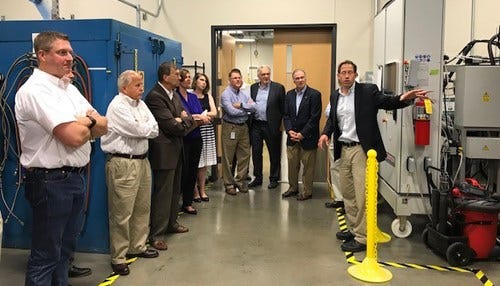Study: ‘Wabash Heartland’ Strapped For Broadband Access
 (Image of the Manufacturing Advisory Council courtesy of the Wabash Heartland Innovation Network.)
(Image of the Manufacturing Advisory Council courtesy of the Wabash Heartland Innovation Network.)
Subscriber Benefit
As a subscriber you can listen to articles at work, in the car, or while you work out. Subscribe NowThe Wabash Heartland Innovation Network, a 10-county, tech-focused initiative supporting the agriculture and manufacturing industries, has released a study illustrating lagging broadband access in the region. The findings suggest residents would have saved $27 million if all unserved homes had access to the high-speed digital technology.
The WHIN was first announced in 2016 and it is backed by a nearly $40 million grant from Indianapolis-based Lilly Endowment Inc. Its goal is to tap into the region’s strengths to establish it as a globally-recognized hub for Internet-of-Things technology.
The study draws on Federal Communications Commission data from late-2016 and the 2012-2016 American Community Survey. It shows nearly 34,000 households in the 10-county region did not have access to broadband that met the qualifying threshold of 25 megabits per second download speed and three megabits per second upload speed.
Purdue University Center for Regional Development Roberto Gallardo led the report and said "while lack of density is an issue when building broadband, there are high density areas not served by residential 25/3. Clearly, other factors are at play, such as right-of-way fees or topological (detailed descriptions on a map of the natural and artificial features of an area) barriers limiting access to 25/3."
The study says low or no access to broadband affected each county differently, with costs totaling $5.12 million in Tippecanoe County, $4.42 million in Montgomery County, $3.31 million in Cass County, $3.01 million in Clinton County, $2.43 million in Benton County, $2.42 million in Carroll County, $1.99 million in Pulaski County, $1.77 million in Warren County, $1.40 million in Fountain County and $1.25 million in White County.
The findings, officials say, are designed to serve as a catalyst for broadband discussions and to help identify ways to address use and service gaps.
You can connect to more on the report by clicking here.
